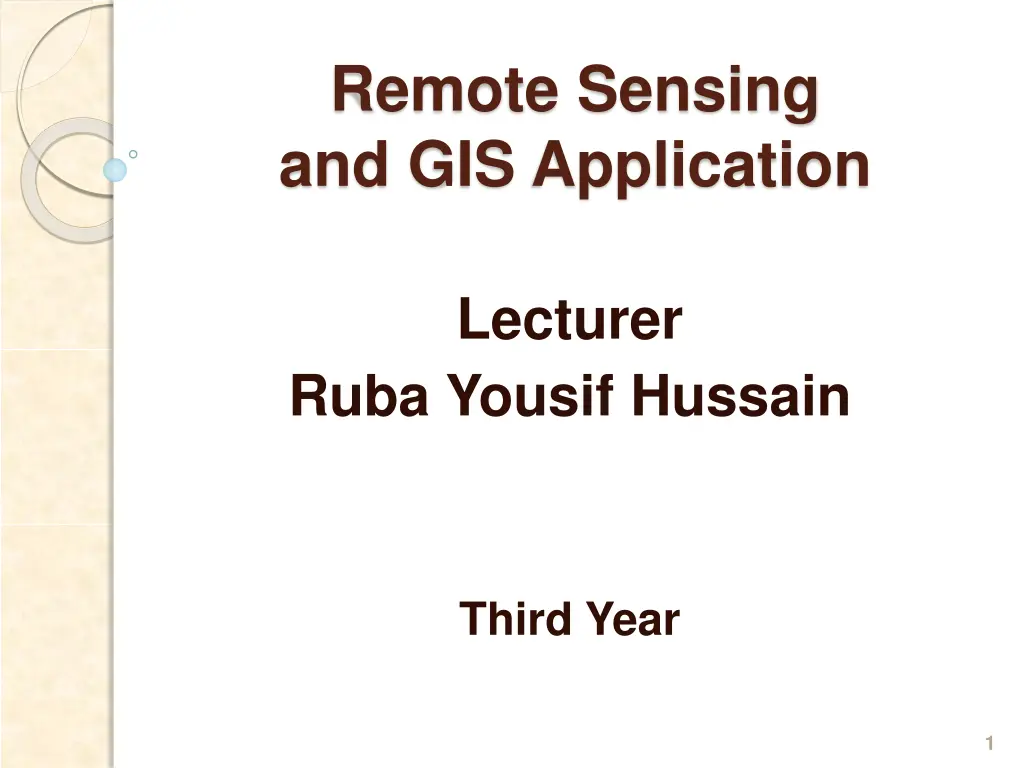
Spectral Enhancement Techniques in Remote Sensing and GIS Application
Explore spectral enhancement techniques such as band ratios, principal components analysis, and tasseled cap transformation for optimizing imagery in remote sensing and GIS applications. Learn about vegetation indices like NDVI and how to calculate them using tools like ArcGIS.
Download Presentation

Please find below an Image/Link to download the presentation.
The content on the website is provided AS IS for your information and personal use only. It may not be sold, licensed, or shared on other websites without obtaining consent from the author. If you encounter any issues during the download, it is possible that the publisher has removed the file from their server.
You are allowed to download the files provided on this website for personal or commercial use, subject to the condition that they are used lawfully. All files are the property of their respective owners.
The content on the website is provided AS IS for your information and personal use only. It may not be sold, licensed, or shared on other websites without obtaining consent from the author.
E N D
Presentation Transcript
Remote Sensing and GIS Application Lecturer Ruba Yousif Hussain Third Year 1
Remote Sensing and GIS Application Lecturer Third Year Ruba Yousif Hussain Spectral Enhancement of Imagery Enhancing imagery by transforming the values of each pixel on multi-band images. The most widely used techniques of spectral enhancement are : 1. Spectral Ratios and Indices Performs band ratios that are commonly used in vegetation and mineral studies. 2. Principal Components Analysis ( PCA ) Compresses redundant data values into fewer bands which are often more interpretable than the source data. 3. Tasseled Cap Transforms and rotates the data structure axes to optimize data viewing for vegetation studies. Band Ratios - 4 / 3 Ratio ( NIR / Red ) -enhances the presence of vegetation . The brighter the tones the denser the vegetation . - 5 / 2 Ratio ( MIR / Green ) To detect moisture levels . - 2 /5 Ration ( Green / MIR ) To pull out water bodies . - 3 / 7 Ratio ( Red / MIR ) To see differences in water turbidity. - 3 / 1 Ratio ( Red / Blue ) To detect ferric iron rocks. - 5 / 7 Ratio ( MIR / MIR ) To detect clay rich rocks. Aside from the 5 ratios listed here there are 25 other possible ratios to perform with Landsat TM imagery. 2
Remote Sensing and GIS Application Lecturer Third Year Ruba Yousif Hussain Vegetation Indices IR / R Square root ( IR / R ) Normalized Difference Vegetation Index ( NDVI ) Raster calculator Builds and executes a single Map Algebra expression using Python syntax in a calculator-like interface. 3
Remote Sensing and GIS Application Lecturer Third Year Ruba Yousif Hussain Laboratory Spectral Enhancement of Imagery Purpose Spectral Enhancement of Imagery Application ArcGIS Tutorial Calculating NDVI. NDVI Formula NDVI = NIR R / NIR + R Or Landsat B4 Landsat B3 = Landsat B4 + Landsat B3 NDVI result gives pixel values from 1 to +1. The closer to +1 , the brighter the pixel and a brighter pixel means healthier vegetation. NDVI using Image Analysis Window There is an easier and much simple way to do NDVI in ArcMap ! ArcMap has a button in Image Analysis Window. You do not even need to create floating point images. The images must be in the correct order to get the correct results. 4
Remote Sensing and GIS Application Lecturer Third Year Ruba Yousif Hussain 5
Remote Sensing and GIS Application Lecturer Third Year Ruba Yousif Hussain 6






















